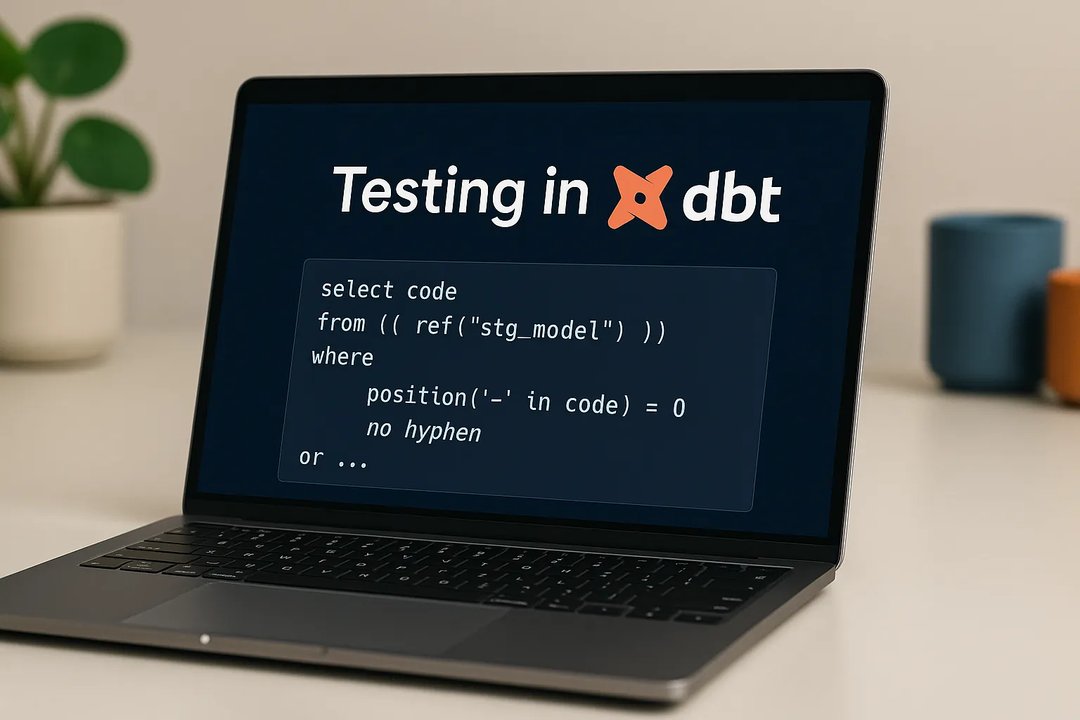
Maria Chojnowska
8 May 2023, 10 min read

What's inside
- Artificial Intelligence - definition
- Key concepts and terminology
- The types of artificial intelligence
- Conclusion
- TL’DR
Artificial intelligence (AI) is a rapidly growing field of computer science that can potentially transform many aspects of our lives. From autonomous vehicles to personalized healthcare, AI is already being used to tackle complex challenges and improve efficiency in a variety of industries.
But what exactly is AI, and how does it work? In this article, we'll explore the basics of artificial intelligence. Whether you're a tech enthusiast or just curious about this emerging field, read on to learn more about the fascinating world of AI.
Artificial Intelligence - definition
Artificial intelligence (AI) is a branch of computer science and engineering that focuses on developing intelligent machines that can perform tasks that typically require human intelligence, such as visual perception, speech recognition, decision-making, and language translation.
AI systems are designed to learn from experience, adapt to new situations, and improve performance over time without being explicitly programmed. The ultimate goal of AI is to create machines that can simulate human intelligence, including reasoning, problem-solving, and creativity.
AI has become increasingly important in modern society for a variety of reasons:
- Efficiency
AI can automate repetitive and mundane tasks, allowing human workers to focus on more complex and creative tasks.
- Improved decision-making
AI can analyze large amounts of data and make predictions or recommendations based on that data, which can help businesses and organizations make more informed decisions.
- Personalization
AI can personalize individual experiences, such as personalized recommendations on streaming services or customized healthcare treatments.
- Accessibility
AI can assist people with disabilities and improve accessibility in various areas, such as communication and mobility.
- Innovation
AI drives innovation in many industries, including healthcare, finance, transportation, and entertainment.
Key concepts and terminology
To understand AI, it is essential to be familiar with key concepts and terminology commonly used in the field. This includes understanding different types of AI, such as machine learning and deep learning, as well as the algorithms and techniques used to develop AI systems, e.g., neural networks and reinforcement learning. Other important concepts include natural language processing, computer vision, ethics, and bias in AI.
Let’s review the key concepts and terminology to understand AI basics better.
Machine learning
Machine learning (ML) is a subset of artificial intelligence (AI) that involves training algorithms to make predictions or decisions based on input data. Unlike traditional programming, where rules and logic are explicitly defined, ML algorithms are trained using large datasets to learn patterns and make decisions.
There are several types of machine learning algorithms, including supervised learning, unsupervised learning, and reinforcement learning. Supervised learning involves training an algorithm on labeled data, while unsupervised learning involves training an algorithm on unlabeled data. Reinforcement learning involves training an algorithm to make decisions based on rewards and punishments.
Some examples of machine learning in practice include:
- Image recognition: ML algorithms can analyze images and identify objects, people, and other features. This is used in applications such as facial recognition, security cameras, and self-driving cars.
- Speech recognition: ML algorithms can analyze speech and convert it to text or identify specific words or phrases. This is used in virtual assistants, dictation software, and call center automation applications.
- Fraud detection: ML algorithms can analyze large datasets of financial transactions and identify patterns that may indicate fraudulent activity.
- Personalization: ML algorithms can analyze user data such as browsing history, purchase history, and social media activity to provide personalized recommendations and experiences in applications such as e-commerce, entertainment, and social media.
- Healthcare: ML algorithms can analyze medical data to assist with diagnoses, predict outcomes, and personalize treatments.
Deep learning
Deep learning is a subset of machine learning that involves training neural networks with multiple layers to recognize patterns in data. Deep learning models are typically used for complex tasks that involve large amounts of data, like image and speech recognition, natural language processing, and autonomous driving.
Deep learning models consist of layers of artificial neurons, each processing input data and passing it on to the next layer. These layers allow the model to learn increasingly complex representations of the input data, ultimately making predictions or decisions based on the known patterns.
Some examples of deep learning in practice:
- Image recognition: Deep learning models can identify objects, people, and other features within images with high accuracy, enabling applications such as facial recognition, object detection, and medical imaging.
- Speech recognition: Deep learning models can transcribe speech to text with high accuracy, enabling applications such as virtual assistants, dictation software, and call center automation.
- Natural language processing: Deep learning models can analyze and generate human language, enabling applications such as language translation, sentiment analysis, and chatbots.
- Autonomous driving: Deep learning models can analyze sensor data from cameras and other sensors to detect and respond to objects and obstacles on the road.
- Robotics: Deep learning models can enable robots to perform complex tasks, such as grasping objects, navigating environments, and learning from demonstrations.
Natural language processing
Natural Language Processing (NLP) is a subfield of artificial intelligence (AI) that involves training machines to understand, interpret, and generate human language. NLP allows machines to process and analyze large amounts of text and speech data, enabling applications such as language translation, sentiment analysis, and chatbots.
Natural language processing in practice:
- Language translation: NLP algorithms can accurately translate text from one language to another. This is used in applications such as Google Translate and Microsoft Translator.
- Sentiment analysis: NLP algorithms can analyze large amounts of text data, such as social media posts and customer reviews, to determine the sentiment or emotion expressed. This is used in applications such as brand monitoring and customer service.
- Chatbots: NLP algorithms can enable chatbots to understand and respond to natural language inputs from users. This is used in applications such as virtual assistants and customer service chatbots.
- Text summarization: NLP algorithms can analyze large amounts of text data and generate summaries that capture the most important information. This is used in applications such as news aggregation and document summarization.
- Named entity recognition: NLP algorithms can identify and extract named entities, such as people, organizations, and locations, from text data. This is used in applications such as information retrieval and data analysis.
Robotics
Robotics is a field of study and engineering that deals with robot design, construction, operation, and use. A robot is a machine or an autonomous agent capable of carrying out a complex series of actions automatically, typically by being programmed or controlled by a computer.
Some examples of robotics in practice include:
- Manufacturing: Robots are commonly used in manufacturing processes, such as assembling and welding, to increase efficiency and precision.
- Healthcare: Robots, such as surgery and rehabilitation, are used in healthcare applications to perform delicate and precise tasks and assist patients.
- Exploration: Robots are used in exploration applications, such as space and deep-sea exploration, to gather data and perform tasks in dangerous or inaccessible environments.
- Agriculture: Robots are used in agriculture applications, such as crop monitoring and harvesting, to increase efficiency and reduce labor costs.
- Military: Robots are used in military applications, such as bomb disposal and surveillance, to perform dangerous or high-risk tasks.
Computer vision
Computer vision is a field of study and engineering that focuses on enabling machines to interpret and analyze visual data from the world around them. Computer vision involves the development of algorithms and techniques that allow devices to recognize, process, and understand images and videos.
Computer vision in practice includes:
- Object recognition: Computer vision algorithms can identify and classify objects within images and videos, enabling applications such as facial recognition, autonomous driving, and security surveillance.
- Image segmentation: Computer vision algorithms can separate images into different regions or segments, enabling medical imaging and satellite imagery analysis applications.
- Optical character recognition (OCR): Computer vision algorithms can recognize and read text within images and videos, enabling applications such as document scanning and automatic license plate recognition.
- Augmented reality: Computer vision algorithms can enable augmented reality applications by overlaying digital images onto the real world, such as virtual try-ons for clothing and furniture.
- Robotics: Computer vision algorithms can enable robots to perceive and understand their environment, enabling applications such as navigation, obstacle avoidance, and object manipulation.
The types of artificial intelligence
There are primarily four types of artificial intelligence:
- Reactive Machines
These machines can only react to the current situation based on pre-programmed rules without the ability to store past experiences. They are not capable of using historical data to make future decisions. Examples of reactive machines include Deep Blue, which IBM used to beat a world chess champion, and AlphaGo, which Google developed to defeat human Go champions.
- Limited Memory
Limited memory AI systems can store past experiences and use them to make informed decisions in the future. These systems can analyze and interpret historical data to improve their performance. Examples of limited memory AI include self-driving cars, which use data from sensors and cameras to make driving decisions.
- Theory of Mind
This type of AI can understand human emotions, beliefs, intentions, and desires. It can interact with humans in a way that is similar to how humans interact with each other. Theory of Mind AI is still in its early stages of development, and no commercial applications exist yet.
- Self-aware AI
This is the most advanced type of AI that can understand its existence and capabilities and reason about its thoughts and actions. Self-aware AI does not exist, but some researchers speculate it could be developed.
The different types of AI are categorized based on their level of complexity and sophistication. As technology advances, we may see new categories emerge, and existing categories may become more refined.
Conclusion
Continued research and development in AI are essential to unlock the full potential of this technology and address the challenges and opportunities it presents. AI has already shown immense potential in transforming many industries and improving people's lives.
There is still much to learn and discover about AI's capabilities, limitations, and implications. Investing in AI research and development can lead to new and innovative applications, improved efficiency, better decision-making, and solutions to many societal challenges.
At the same time, addressing the potential risks and ethical considerations associated with AI is crucial, and continued research can help develop ethical frameworks and guidelines.
Ultimately, investing in AI research and development can create a better future for all of us.
If we can help you with your next project, do not hesitate to contact us.
TL’DR
- Artificial intelligence (AI) refers to the ability of machines to perform tasks that typically require human intelligence, such as learning, reasoning, and problem-solving.
- Machine learning is a type of AI that involves training machines to recognize patterns and make predictions based on data.
- Deep learning is a type of machine learning that involves training neural networks with large amounts of data to make more accurate predictions.
- Natural language processing (NLP) is an AI that teaches machines to understand and process human language.
- Robotics is a field of AI that involves designing and building robots to perform tasks that typically require human intelligence and agility.
- Computer vision is a type of AI that involves teaching machines to interpret and analyze visual data, such as images and video.
- Different types of AI exist, including narrow or weak AI, general or strong AI, and super AI.
- AI has numerous potential benefits, including improved healthcare, increased efficiency, safer transportation, better decision-making, enhanced customer experiences, improved education, and environmental benefits.
- However, AI has potential challenges and risks, including job displacement, bias, discrimination, privacy and security concerns, unintended consequences, lack of transparency and accountability, regulation and governance, and ethical considerations.
- Addressing these challenges and risks requires a collaborative effort from policymakers, researchers, industry leaders, and society to develop and implement ethical frameworks and guidelines for AI.


